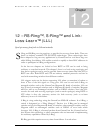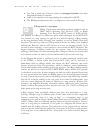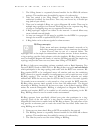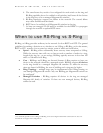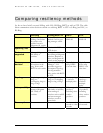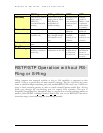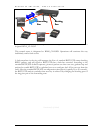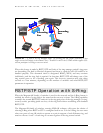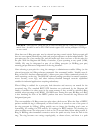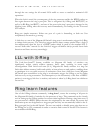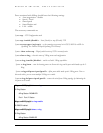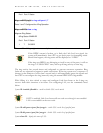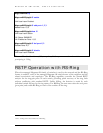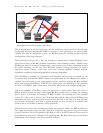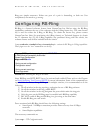
MAGNUM 6K SWITCHES, MNS-6K USER GUIDE
FIGURE 86 – More than one S-Ring pair can be selected and more than one S-Ring can be defined per
switch. Note – the mP62 as well as the ESD42 switches support LLL and can participate in S-Ring as
an access switch
Ring 1
Ring 2
Ring 1
Ring 2
More than one S-Ring port-pair may be selected per ring control switch. Each port-pair will
have its own separate attached ring, and each port-pair operates on faults independently. The
port-pairs may be of any media type, and the media type does not have to be the same for
the pair. With the Magnum 6K family of switches, a port operating at any speed (10Mb,
100Mb, Gb) may be designated as part of an S-Ring port-pair (or RS-Ring port pair)
ensuring proper Ethernet configuration of the ring elements.
After selecting a port-pair for a ring, the manager or administrator enables S-Ring (on the
selected port-pairs via S-Ring software commands. One command (enable / disable) turns S-
Ring on and off. Another command adds / deletes port- pairs. Other commands provide for
status reporting on the ring. The MNS-6K software package provides for remote operation,
access security, event logs, and other industry-standard managed network capabilities
suitable for industrial applications requiring redundancy.
When S-Ring is enabled for a port-pair, fault detection and recovery are armed for the
associated ring. The standard RSTP/STP functions are performed by the Magnum 6K
family of switches for other ports in the same manner as they would be without S-Ring
enabled, when operating in the RING_CLOSED state. During this state, RS-Ring or S-Ring
is also watching the flow of the BPDU packets that move around the ring between the
designated part-pair.
The extra capability of S-Ring comes into play when a fault occurs. When the flow of BPDU
packets around the ring is interrupted (or when Link-Loss is sensed on one of the ports of
the ring port-pair by S-Ring), S-Ring quickly acts to change the blocking port’s state to
forwarding. No waiting for STP analysis. No waiting for RSTP analysis. No checking for
other possible events. No other ports to look at. No 30-second delay before taking action. S-
Ring or RS-Ring takes immediate corrective action for quick recovery from the fault in the
ring. The ring becomes two strings topologically, as shown above, and there is a path
157



